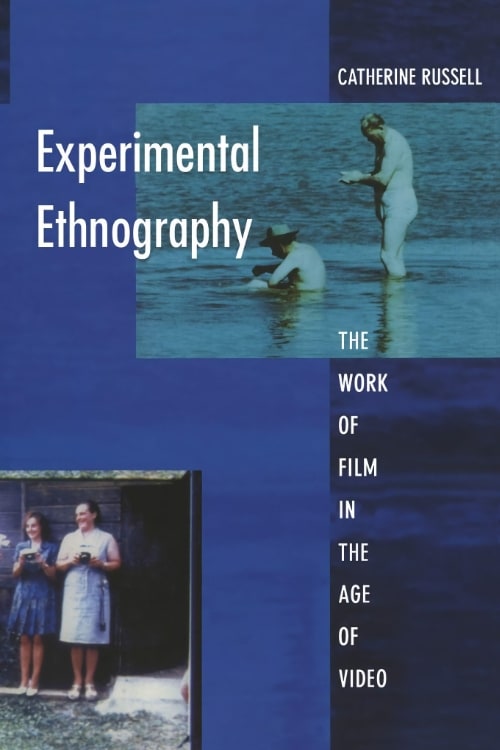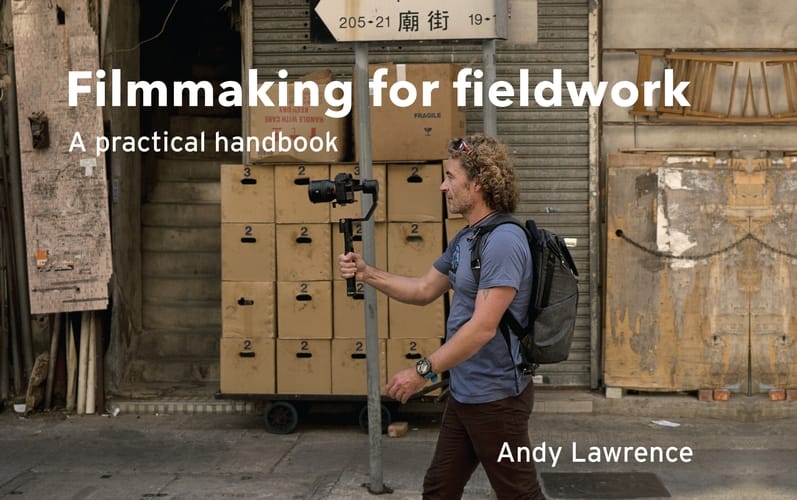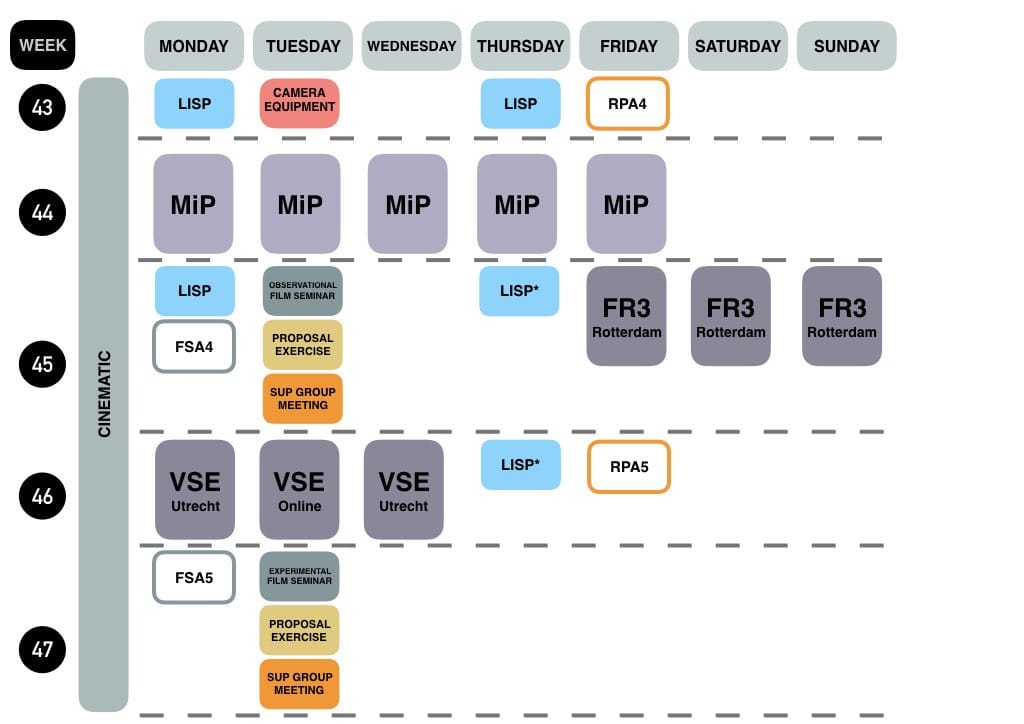09:00-10:00 Equipment Distribution
Students who are borrowing cameras from the university will receive their kits. Students with audio kits already should bring them. Each student will receive the equipment they have requested and signs the user agreement.
Students who have their own cameras and/or audio equipment should bring these.
10:00-12:00 Recording Discipline & Technique
In the first tutorial of the cinematic research practice module, we will focus on getting comfortable with your camera and audio combo, developing your recording discipline, and practicing editing-in-the-camera. With ‘Editing in the camera’ we refer to the skill of applying cinematic principles of editing whilst making shots. Ideally, these shots could be played as a sequence without the need for post-production editing or perhaps with minimal tuning of the edges.
Make sure you watch the tutorial video Editing in the Camera before this tutorial session.
Basic Camera & Sound recording skill-training
Basic Camera & Sound skill-training starts off from the idea that in order to define a visual approach for using the camera as a research tool – and subsequently creating a film out of the collected footage – we must first develop a technical understanding of it. Only if we know how to control the ‘basics’ can we effectively deviate from them in order to develop our own style, appropriate to the research goals we are pursuing.
The aim of this seminar is to bring everyone up to a minimal level of understanding and practice of basic videographic principles and techniques, with a particular focus on image and sound recording. Using the same equipment you will use during your field work, we will re-visit skills like framing, exposure, movement, etc. Meanwhile, we will work on developing a personal shooting protocol that will guide you in your day-to-day collection of research material while in the field.
Given the fact that the level of experience in every year’s student cohort varies greatly, we will work in two different groups adapted to basic or advanced individual skillsets.
In-Class Exercises
Recording discipline in practice: Think about the technical adjustments that you must make each time you make a shot. Practice making these adjustments multiple times in different conditions. You will be practicing these skills whilst doing the in-class exercises and the Field Study Assignments, which will help you develop these adjustments as a routine and ultimately as second nature.
- Focus/depth of field/hyperfocal distance
- Exposure/ND filters/Gain/backlight
- White-balance – Color-temperature of daylight and artificial light.
Editing in the camera: We will perform two modes of in-camera editing by recording different types of shots for different kinds of sequences:
- Editing within the shot by choosing and changing frames and camera-positions
- Continuity-editing and Non-Continuity Editing and its implicit messages
Each exercise should not exceed the length of 3 min.




